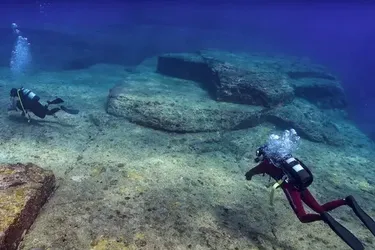Ancient city under the sea: scientists discover "Japanese Atlantis" with pyramids and hieroglyphics (photo)

The lost city, often called the Japanese Atlantis, was discovered in 1986. A local diver, exploring the southern Ryukyu Islands in search of sharks, came across a mysterious pyramid with ancient hieroglyphics on the walls, hidden at a depth of about 25 meters underwater, reports the Daily Star.
This underwater monument was named Yonaguni, and over the next decades, scientists actively explored it. The discoverer claimed that the city consists of perfectly carved stairs with straight edges.
Based on preliminary data, the underwater city is about 10 thousand years old, but its origin remains mysterious. There are three main hypotheses about the emergence of Japanese Atlantis.
The first theory states that this city was created by human hands. Approximately 12 thousand years before Christ, it could have been built by the prehistoric Japanese people of Dzemon. Some researchers point to the presence of ancient hieroglyphs on the city's walls, which indicates its human origin.


This theory is supported by a marine geologist from the University of Ryukyu, Masaaki Kimura, who has been researching the city for over 20 years. He notes that small sites, pottery, hearths, and stone tools have also been found at the site.
The second theory suggests that the underwater city off the coast of Japan is the result of alien activity. This version is supported by conspiracy theorists.
The third theory claims that Yonaguni is a natural formation. Dr. Robert Schoch believes that the flat steps seen by divers are the result of erosion. In his opinion, no part of the monument was built from individual stone blocks and therefore is probably a work of nature.
If you want to get the latest news about the war and events in Ukraine, subscribe to our Telegram channel!
